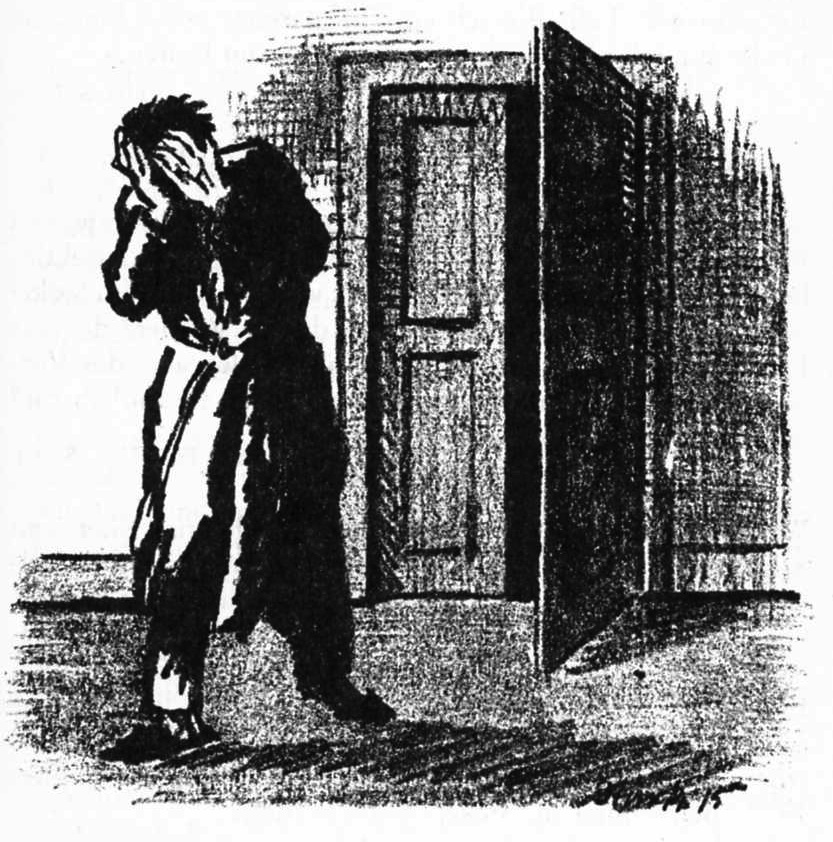
Uh, no. George Musser offers an interesting and terribly mind-bending defense of the notion of fate, one that relies on the ability of information to travel forward as well as backward in time. From Nautlius.
The Quantum Mechanics of Fate
How time travel might explain some of science’s biggest puzzles
By George Musser | Illustration by Chad Hagen
January 30, 2014
“THE OBJECTIVE WORLD simply is, it does not happen,” wrote mathematician and physicist Hermann Weyl in 1949. From his point of view, the universe is laid out in time as surely as it is laid out in space. Time does not pass, and the past and future are as real as the present. If your common sense rebels against this idea, it is probably for a single reason: the arrow of causality. Events in the past cause events in the present which cause events in the future. If time really is like space, then shouldn’t events from the future influence the present and past, too?
They actually might. Physicists as renowned as John Wheeler, Richard Feynman, Dennis Sciama, and Yakir Aharonov have speculated that causality is a two-headed arrow and the future might influence the past. Today, the leading advocate of this position is Huw Price, a University of Cambridge philosopher who specializes in the physics of time. “The answer to the question, ‘Could the world be such that we do have a limited amount of control over the past,’ ” Price says, “is yes.” What’s more, Price and others argue that the evidence for such control has been staring at us for more than half a century.
That evidence, they say, is something called entanglement, a signature feature of quantum mechanics. The word “entanglement” has the same connotations as a romantic entanglement: a special, and potentially troublesome, relationship. Entangled particles start off in close proximity when they are produced in the laboratory. Then, when they are separated, they behave like a pair of magic dice. You can “roll” one in Las Vegas (or make a measurement on it), your friend can roll the other in Atlantic City, N.J., and each die will land on a random side. But whatever those two sides are, they will have a consistent relationship to each other: They could be identical, for example, or always differ by one. If you ever saw this happen, you might assume the dice were loaded or fixed before they were rolled. But no crooked dice could behave this way. After all, the Atlantic City die changes its behavior depending on what is going on with the Las Vegas die and vice versa, even if you roll them at the same moment.
The standard interpretation of entanglement is that there is some kind of instant communication happening between the two particles. Any communication between them would have to travel the intervening distance instantaneously—that is, infinitely fast. That is plainly faster than light, a speed of communication prohibited by the theory of relativity. According to Einstein, nothing at all should be able to do that, leading him to think that some new physics must be operating, beyond the scope of quantum mechanics itself.
Suppose it is not the case that the particles (or dice) communicate instantaneously with each other, and it is also not the case that their values were fixed in advance. There seem to be no options remaining. But here Price asks us to consider the impossible: that doing something to either of the entangled particles causes effects which travel backward in time to the point in the past when the two particles were close together and interacting strongly. At that point, information from the future is exchanged, each particle alters the behavior of its partner, and these effects then carry forward into the future again. There is no need for instantaneous communication, and no violation of relativity.

At first glance, this interpretation of entanglement replaces one troublesome behavior—instantaneous communication across arbitrary distances—with another—information traveling backward in time. But should we actually be troubled by the idea of information from the future traveling into the past? After all, mathematically, entanglement in time is identical to entanglement in space, and we have no qualms with information traveling in all directions across space.
To think about this problem, consider the most prosaic of objects: a popsicle stick. The stick will bend or buckle, depending on the pressure you apply to both ends. Now imagine a popsicle stick whose ends are separated in time, rather than in space. The same logic should apply: What happens to the middle of the stick will depend on the situation at each end. For entangled particles, the endpoints happen to be in time. At one end is the moment they were created next to each other in the laboratory, and at the other end is the moment when they are far apart and a measurement is taken. Their behavior at some intermediate time depends on information flowing from both past and future.
As with so much else in quantum mechanics, this concept of retrocausality is limited in scope. Only in certain circumstances can we see the future influence the past. Although individual particle processes can move backward or forward in time, the universe as a whole is skewed in the forward direction, because its past endpoint was highly ordered, and its future endpoint is highly disordered. Our mortality is this asymmetry in microcosm.
So is our sensation of time’s passage and, by extension, of free will. We have the feeling that the past is fixed because we have records of it, created as the universe slid from its highly ordered origins toward a messier future. We have no such records of the future. In fact, you could define the future as “that we know not of.” And one of the many things we don’t know about the future is what we ourselves will do in it. We acquire this knowledge only in the act of living. Our decisions might be preordained, but we still have to go through the paces, and that is what gives our volition meaning.
But at the quantum level, time gets fuzzy. The Heisenberg uncertainty principle causes us to have as little knowledge of certain past events as we do of future ones. In a deep sense, those events are not really “past” to us because we do not know what happened—they lie in the open “future.” It is therefore consistent to expect that we can influence those past events. Quantum mechanics redraws the line between ignorance and knowledge, and therefore between future and past.
But our control of the past is very limited—as it must be, if the universe is to avoid imploding in a big logical paradox. Quantum mechanics is set up to deny you that influence. It creates an eddy in the river of time, but only a little one.
Retrocausality skeptics complain, not that retrocausality is weird—all the options for explaining entanglement are—but that proponents have yet to flesh out their ideas into a full-fledged theory. “You can’t just take quantum mechanics as it is and say, ‘I’ll interpret it retrocausally,’” says David Wallace, a University of Oxford philosopher. “You need to come up with a retrocausal, empirically equivalent alternative to quantum mechanics. And that hasn’t been done.”
Proponents accept this criticism. “Those of us who do want to investigate retrocausality have to come up with the goods,” says Matt Leifer, a physicist at the Perimeter Institute. “The fact that not everyone takes it seriously right now, I think they’re right not to.” One of the most developed retrocausal models is the so-called transactional interpretation developed by physicist John Cramer of the University of Washington. According to Cramer, every event sends out a wave propagating both forward and backward in time, connecting the measurement of a particle with its earlier preparation, but canceling out at other locations in spacetime. But even this picture, Wallace says, is just “a sketch of ideas.” There remains no complete model for retrocausality.
But even if retrocausality doesn’t exist, it has inspired new thinking about quantum physics. For instance, it used to be an article of faith that no particle can be measured without disturbing it, but in studying retrocausal models akin to Cramer’s, Yakir Aharonov and his colleagues came up with a technique for “weak measurement.” They realized that you can probe a quantum system so gently that the effects of the probing are lost in the intrinsic uncertainty of the system, yet you can still retrieve useful information by sifting through repeated trials. Aharonov and his colleagues have used this technique in experiments which they say provides evidence of retrocausality—but you don’t need to buy into retrocausality to make use of this technique.
Other researchers are using retrocausality to explain existing results. For example, Price’s collaborator, theoretical physicist Ken Wharton of San José State University, argues that retrocausality is a natural way to understand a process known as frustrated spontaneous emission. An atom that normally emits light will cease emitting when its surroundings become incapable of absorbing that light. Thus one event (emission) depends on something that does or doesn’t happen in the future (absorption). “That’s one of the examples of a particle probing the future and seeing what’s there, and then making a decision based on it, and just not decaying,” Wharton says. “It’s hard to understand in a causal model.”
Retrocausal models have forced physicists to reconsider long-standing taboos. In affording a role for future events in the present day, it joins a line of thought stretching to Plato and Aristotle. They argued that nature, like man, is organized around final ends and goals. Just as the purpose of the baker is to bake, the purpose of the raindrop is to fall, and of the seed to grow into a tree. These so-called teleological approaches fell out of the scientific mainstream when Newton and his contemporaries proved that you could predict the future of natural objects using only present circumstances. There was no explicit role for the future, or need for it. With retrocausality, physics may be forcing a very old idea back into the conversation.
~ George Musser is a writer on physics and cosmology and the author of The Complete Idiot’s Guide to String Theory. He was a senior editor at Scientific American for 14 years and has won such honors as the American Institute of Physics Science Writing Award.








